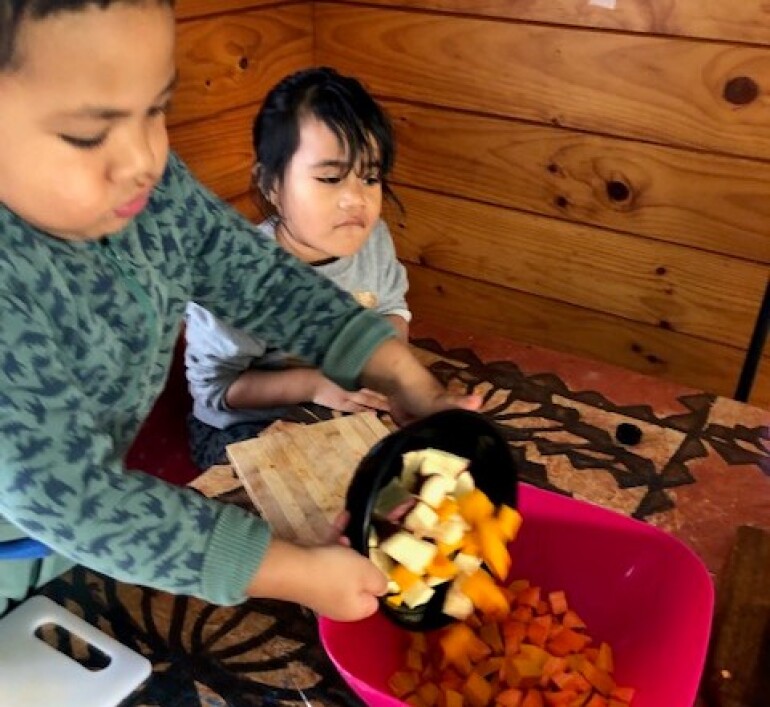News And Events

Cooking with Children
7 August 2022A great way to encourage learning in all areas of the curriculum is to involve children in the kitchen, helping with food preparation, cooking, and baking. Meal preparation offers a meaningful and natural context for a child’s learning, and it is something that we need to do every day! Cooking and baking supports learning in multiple ways, for example:
- Chopping up vegetables for dinner introduces shapes and colours, concepts of division and fractions, multiples (2 carrots each for 4 people) as well as counting and comparison (more/less, longer/shorter).
- Following a recipe promotes learning about sequencing (first, second, third).
- Measuring out ingredients for baking requires concepts of capacity and number, as well as knowledge of how to use tools for weighing and measuring accurately.
- Mixing, kneading and touching food offers sensory experiences.
- Stirring, chopping, whisking and pouring practise motor skills and coordination.
- Baking depends on all kinds of chemical reactions – children can observe the many ways in which food changes as a result of cooking, and also make predictions about what will happen.
- Communicating about cooking introduces new vocabulary and instructional language.
- Putting a meal on the table involves thinking skills: planning, calculating, preparing, ordering tasks, etc.
- Selecting what to include within a meal teaches children about food groups and nutritional needs.
- Harvesting foods from the veggie patch or herb garden teaches children about how foods grow.
- Finding solutions when something goes wrong, or you don’t have a particular ingredient, engages children in problem-solving.
- Arranging food on the plate or decorating a cake involves creativity.
Cooking works best when children have specific jobs to do – such as washing lettuce, chopping kumara, or just being the chief taster! It is also useful to talk through what you are doing as you cook, as children can learn a lot by watching and listening. Cooking together can be a special time where traditional and family recipes are shared. (Information directly from www.theeducationhub.org.nz)
Learning outcomes from Te Whāriki are: over time and with guidance and encouragement, children become increasingly capable of:
- keeping themselves healthy and caring for themselves / te hakai nui
- making connections between people, places and things in their world / te waihanga hononga
- recognising and appreciating their own ability to learn / te rangatiratanga
- understanding oral language and using it for a range of purposes / he hakai ā-waha
- recognising print symbols and concepts and using them with enjoyment, meaning and purpose / he hakai tuhituhi
- recognising mathematical symbols and concepts and using them with enjoyment, meaning and purpose / he hakai pāngarau
- playing, imagining, inventing and experimenting / te hakairo me te tūhurahura I te pūtaiao


